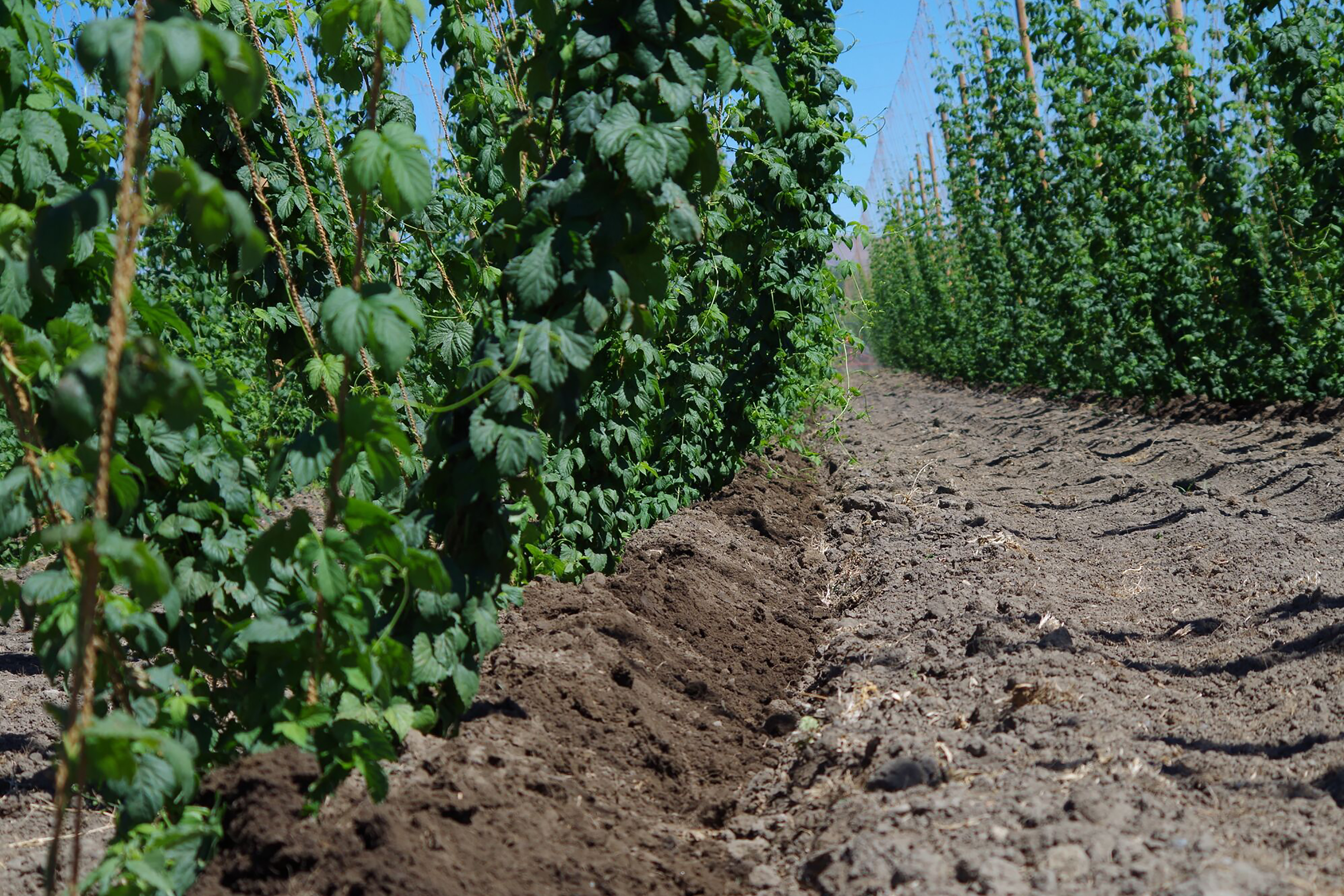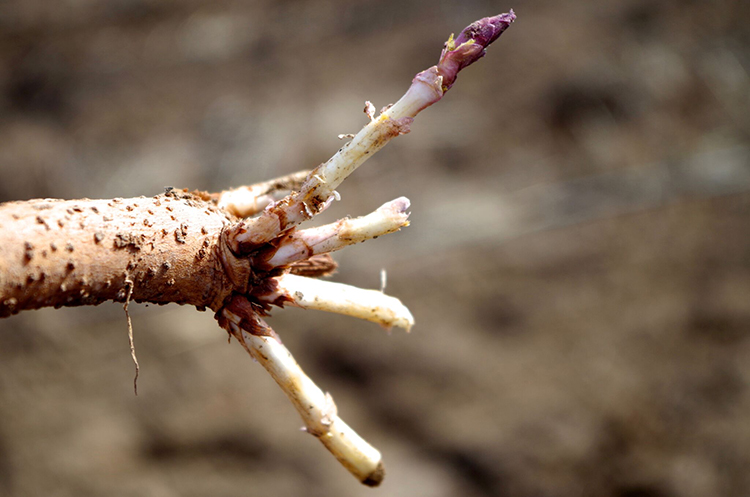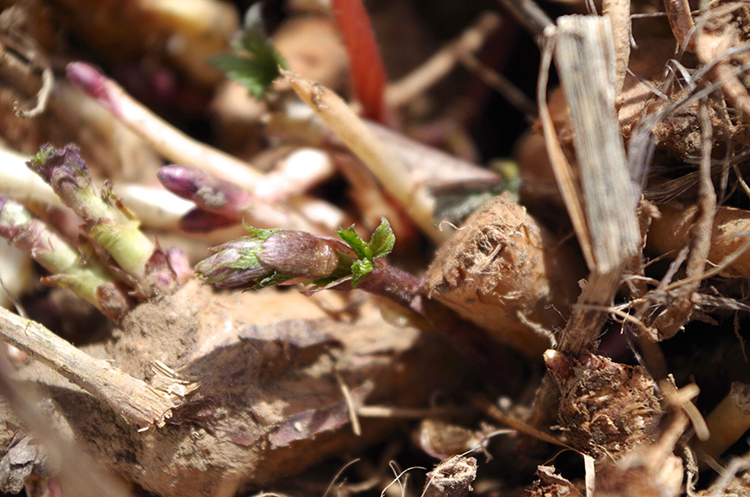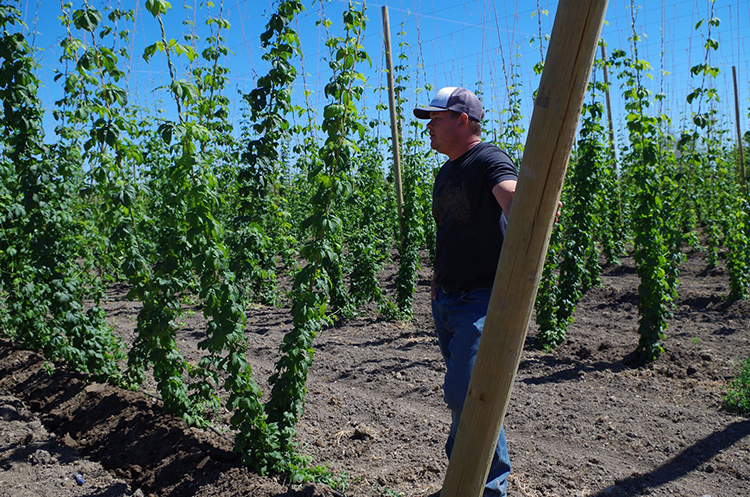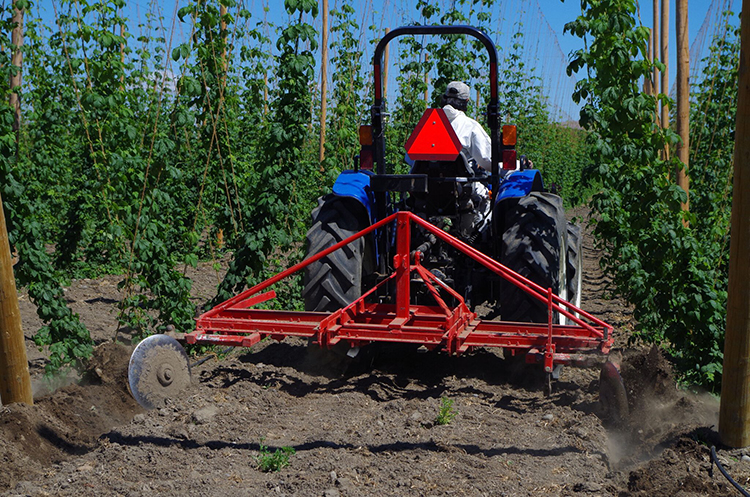Round about now, certain fields in the Valley are kicking up some dust. In this case, it’s to help some youngsters along in their development. It’s time for hillin’ babies. We’re talking hops, of course. Bouncing, baby hops.
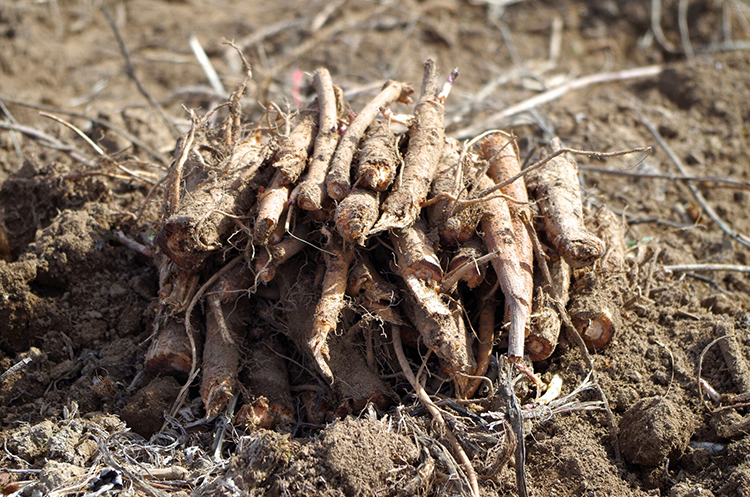 Hops aren’t grown from seed, but are a rhizome, so grow back year after year while their root systems quietly proliferate. Come spring, they can be dug up and divided without disturbing the existing plant. These divided root cuttings are re-planted, either directly into the ground to start a new hop yard, or into pots for later transplant to the field after they’ve started to grow.
Hops aren’t grown from seed, but are a rhizome, so grow back year after year while their root systems quietly proliferate. Come spring, they can be dug up and divided without disturbing the existing plant. These divided root cuttings are re-planted, either directly into the ground to start a new hop yard, or into pots for later transplant to the field after they’ve started to grow.
The first season a new hop is coming out of the ground, they are known affectionately as babies. Talk to any farmer about their babies, and they’ll have stories to tell like a typical parent. Some babies are good, some babies are difficult. Some are healthy and ahead of their growth milestones, some are pesky and unruly no matter how much coddling they get.
Aileen, Shelley and I rendezvous with Reid Lundgren of CLS Farms and follow him over Konnowac Pass out to a baby yard in Buena. Citra babies, and to take the metaphor too far, these little guys are a good looking, fat and rosy cheeked bunch. The sky is blue overhead and a rooster is crowing at a nearby dwelling even though we’re over six hours from dawn. As a single tractor makes rounds, Reid gives us the lowdown. This field was planted as roots back in March. After being twined and given some time to grow, the hilling begins mid-June.
As we all know, babies need a little extra TLC. One of those special treatments that some farmers do is hilling. This is when a small furrow is dug right next to the growing baby, pushing a hill of dirt up against the plant. There are three main reasons why this is done. The first, is to augment its rhizomeness. The new dirt mound at the base creates a larger root area, allowing for increased root growth, which in turn, makes a more robust plant. Second, by raising the root zone, it’s above the ground where it can gather the warmth of the sun easier. On cool nights, this adds a layer of protection to the delicate babies, who love the heat. The third is weed control. By plowing out the competing flora, the plant is made, again, stronger. (It should be noted that not all farmers hill their babies, it is an agricultural choice of practice. The rut in the field it creates can inhibit other types of tractor work throughout the season).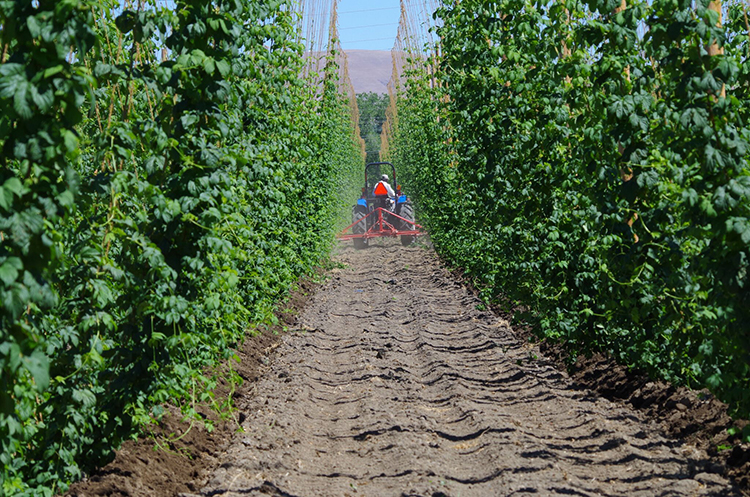
Reid talks with us about the personality of different babies depending on the soils they’re planted in and how much that has diversified since the advent of drip irrigation—places that would have been unthinkable to put up a yard because of the lack of obtainable standard irrigation are now entirely accessible with drip. Each area is finessed according to its own specific needs to keep it moving forward.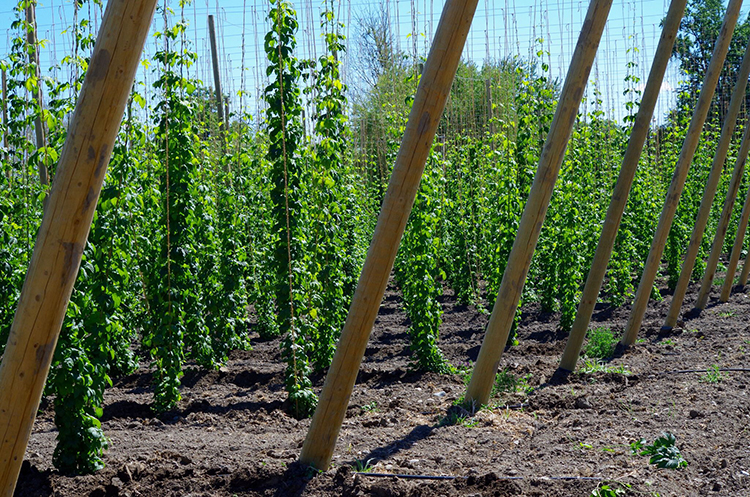
There are so many incremental tasks that take place day after day throughout the growing season. It’s always such a marvel to really see what goes into our beer. Behind every glass is a great deal of care, thought and practice, and that’s before it even gets to the brewery. So let us raise our pints and be glad, for today, the hillin’ is done.
